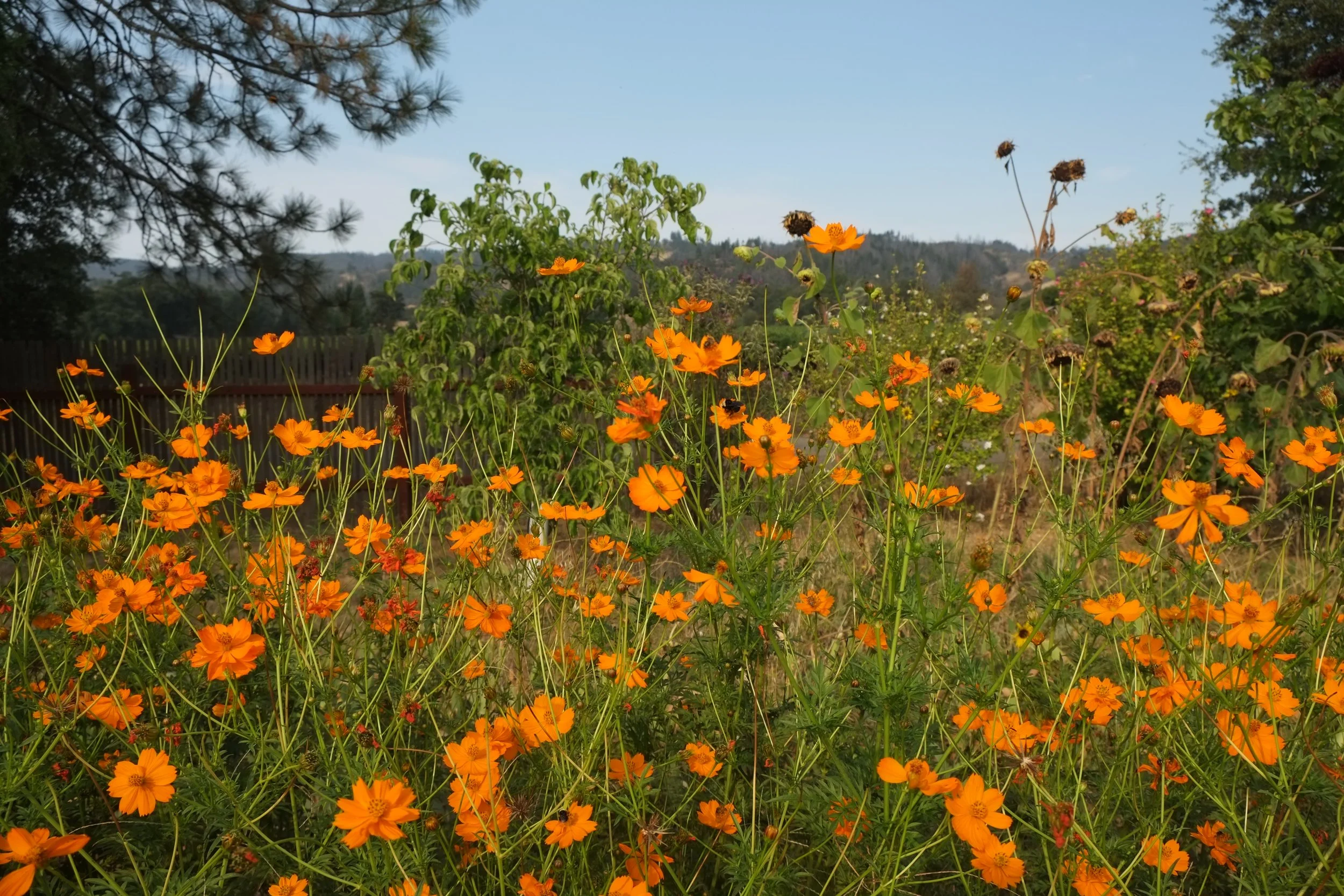TALKS & WORKSHOPS
The Promise of Planetary Health: a comparative study of progressive textile agriculture in the UK, USA and India
The clothing and textiles industries are collectively among the world’s largest polluters, estimated to be responsible for 20% of global industrial water pollution and 10% of global CO2 emissions annually. Since much of the damage occurs during the growing and processing of materials, examining alternative approaches to industrial agriculture such as organic and regenerative agriculture, permaculture and agroecology – via the experience of those engaged in these approaches at the start of the supply chain – is essential. My 5-year Post-Doctoral Research Fellowship project at All Souls College aims to investigate whether the adoption of regenerative agriculture in socioeconomically diverse contexts, signals a sea change in how textiles materials could be grown more sustainably and ethically in the future, while also revitalising local economies. Further, I aim to improve understanding of how social, environmental and economic sustainability functions within alternative food and fibre networks and whether local action might ‘trickle-up’ and impact the textile industry at scale. To do this I will carry out ethnographic research across three continents in the UK, USA, and India with textile farmers experiencing varying extremes of climate, infrastructural and economic instability.
Revisiting Amami Ōshima’s social-ecological heritage through the lens of an American photo archive
This project returned an important photographic collection of colour images and film taken at the time of the US Occupation of Japan, based in the archives of the University of Syracuse, NY, USA, to its originating community on the island of Amami Ōshima. The collection, made by American anthropologist Douglas Haring between 1951-52, contains visuals of Amamian nature, social and cultural life, industry and land management that reflects the intimate engagement that the Amamian people have historically cultivated with their environment. Using archival and empirical research, we returned the visual archive via a community-curated exhibition, which opened to coincide with the 70th anniversary of the return of Amami to Japan from the American Allied Forces on 25th December 1953. The exhibition will tour across thirteen venues throughout the Amamian islands and Kagoshima until April 2024. The project seeks to establish how everyday relationships with natural resources have changed in the 70 years since the photographs were taken and to consider how economic development and geopolitical interventions have disrupted Amami’s ecological heritage. This ongoing project is a collaboration between myself, Prof. Kei Kawai and Emeritis Prof. Sueo Kuwahara based at Kagoshima University and the Amamian community. It has financial and logistical support from Kagoshima University, the Wide Area Office Association of the Amami Islands, the Daiwa Anglo-Japanese Foundation and the Great Britain Sasakawa Foundation.
Permission to use these photos has been granted by: Douglas Haring Papers, University Archives, Special Collections Research Center, Syracuse University Libraries.
In 2019 I organised a series of talks and workshops around the process of dorozome (mud dyeing), bringing my fieldwork participants from Kanai Kougei in Japan to the UK. The events featured a lecture about my ethnographic research into local dyeing processes and textile production on Amami Oshima island, a Q & A, and a practical dyeing workshop led by dyeing artisan Yukihito Kanai. This programme took place at Wolfson College, Oxford; the Horniman Museum, London; and the Royal College of Art, London. The series was kindly sponsored by Great Britain Sasakawa Foundation, the Daiwa Foundation, the British Association of Japanese Studies, The Japan Society of the UK, and Wolfson College, with logistical support from The Japan Society. I have also given presentations about my work and research in both public and academic settings in the US, Japan and the UK, and run workshops for students on the Princes Trust Building Arts course based at Dumfries House, Scotland.
TEACHING
For the academic year 2022-2023 I was a Departmental Lecturer in Visual, Material and Museum Anthropology at the University of Oxford. I continue to lecture on the anthropology of art and design, apprenticeship methodologies, and museum practice in the School of Anthropology and Museum Ethnography. Previously I have taught modules on the Anthropology of Capitalism for undergraduates at Hertford College, lectured on consumption and material culture for undergraduate and post-graduate students, and assisted Prof. Inge Daniels on the post-graduate ‘Objects in Motion’ option, that explores anthropological approaches to commodification. I have also been an Ashmolean Junior Teaching Fellow on Krasis, a project that brings academics and students into close contact with museum objects.
RESEARCH
Disobedient Buildings
Since January 2020 I have worked as the designer for Disobedient Buildings, a multi-sited research project directed by Prof. Inge Daniels about housing, welfare and wellbeing based at the Institute of Social and Cultural Anthropology at the University of Oxford. The project studies the impact of neo-liberal reforms over the past three decades on the everyday lived experiences of inhabitants of ageing tower blocks in different European welfare states. As part of this project, I have been responsible for the design of the website, branding and participant packs launched in response to the Covid-19 pandemic.
PUBLICATIONS
2022. ‘Re-evaluating a tree’s ‘real worth’: The historical dispossession of ecological stewardship and its legacy for a Japanese textile tradition’. History and Anthropology, DOI: 10.1080/02757206.2022.2116017
2022. ‘The Mejiro bird: between commodity, conservation and companion’ in Animals matter: Resistance and transformation in animal commodification. J. Dugnoille & E. Vander Meer (eds.) Leiden: Brill.
2022. Listening for the call of place a commissioned essay written for the Cross Currents residency; a partnership conceived and organised by Bothy Project, Fogo Island Arts, and Fogo Island Workshops.
2021. ‘Sustainability reconsidered: An ethnography of natural dyeing in contemporary Japan.’ DPhil Anthropology thesis. University of Oxford. Awarded the Prof. Marcus Banks Prize in Visual Methods. School of Anthropology and Museum Ethnography, University of Oxford.
2020. “Making It For Our Country”: An Ethnography of Mud-Dyeing on Amami Ōshima Island, TEXTILE, 18:3, 250-277, DOI: 10.1080/14759756.2019.1690837
2017 ‘Domestic Pottery in Abuja, Nigeria’. In Go Woman Go! edited by Laura Aldridge. London: British Council. ISBN 9780863557934
2016 ‘Wool-Work in the Outer Hebrides: Harris Tweed, and the Intersecting Productive Forces and Frictions of Brand and Authenticity’. MSc thesis in Visual, Material and Museum Anthropology, University of Oxford.
METHODOLOGIES


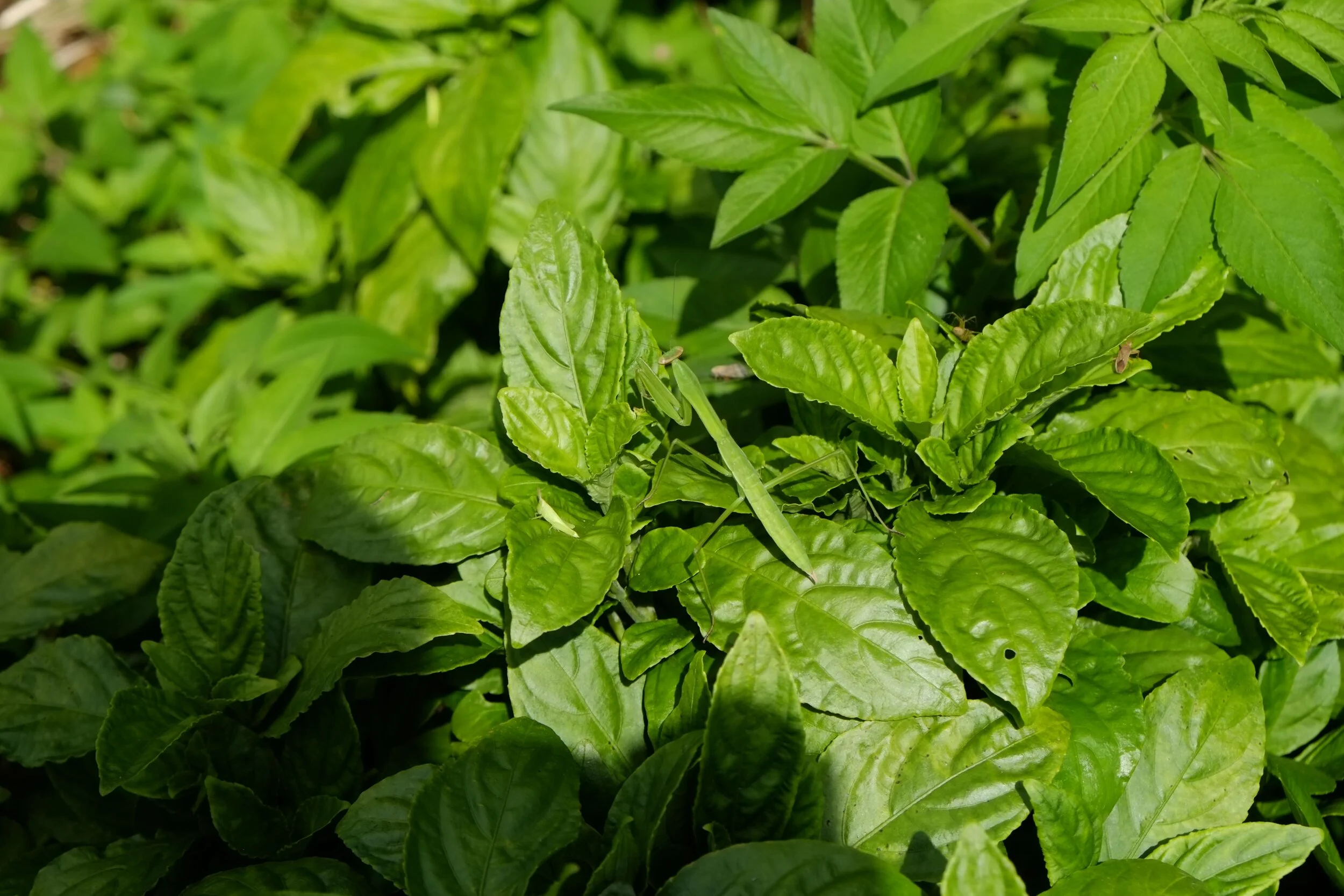

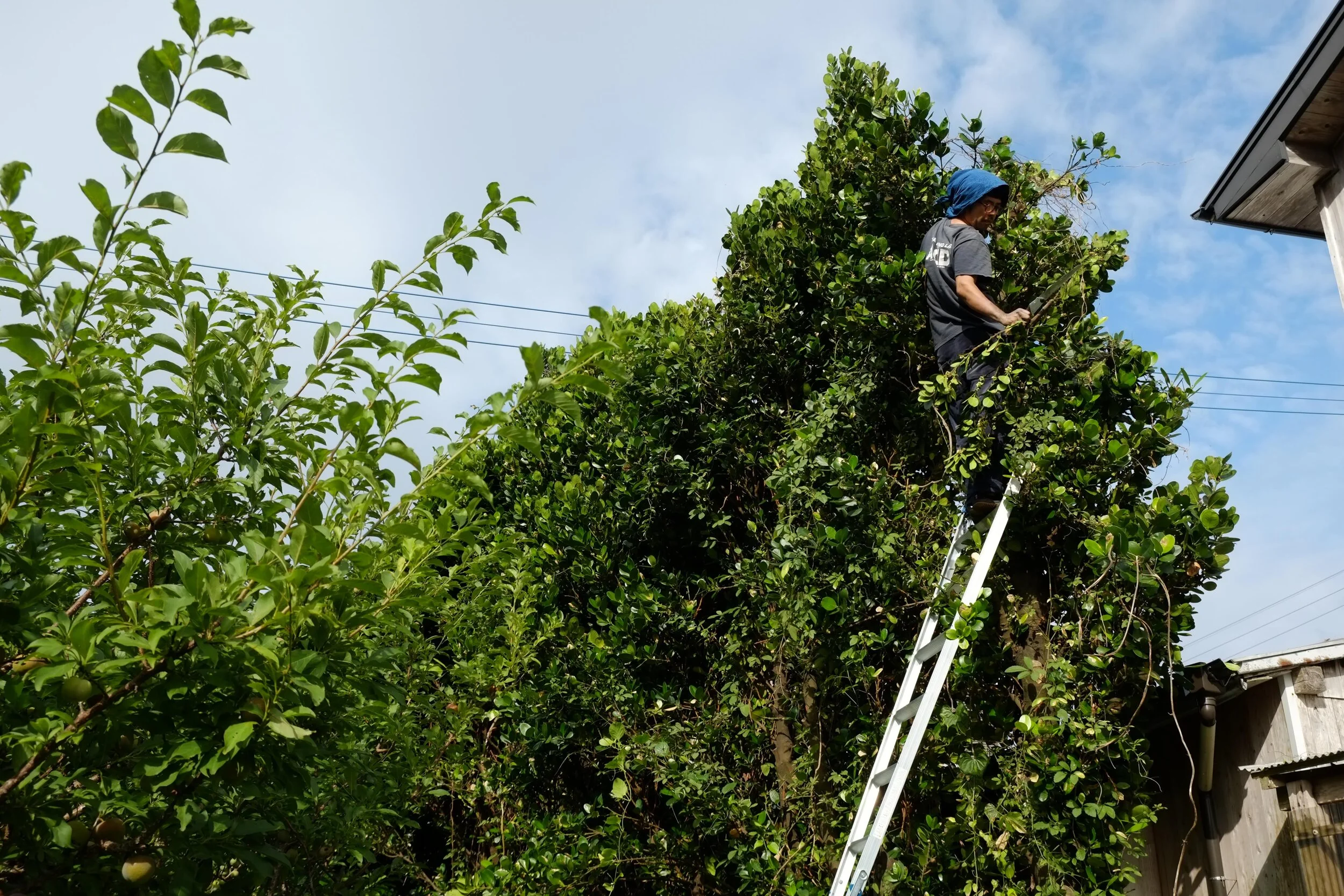


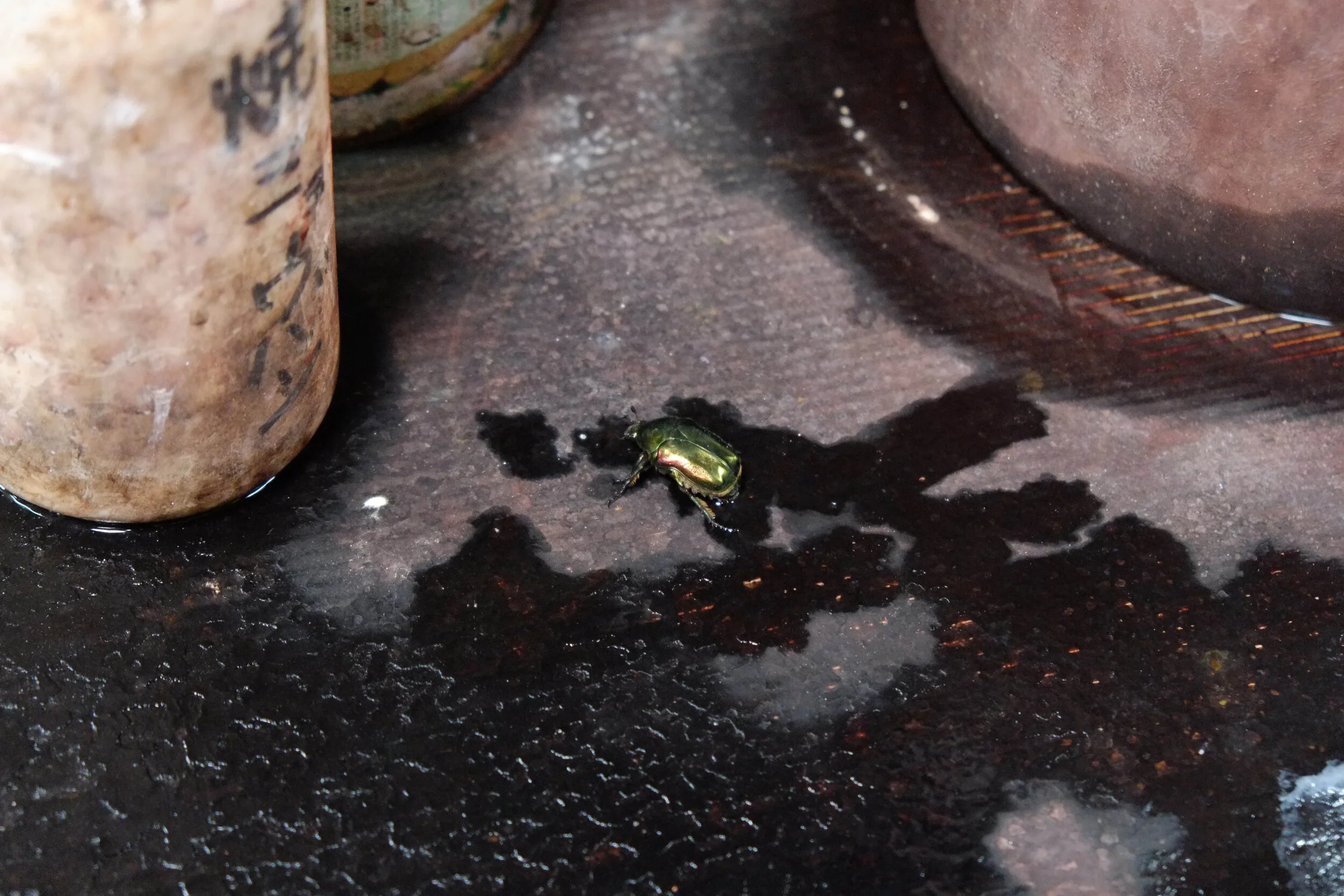
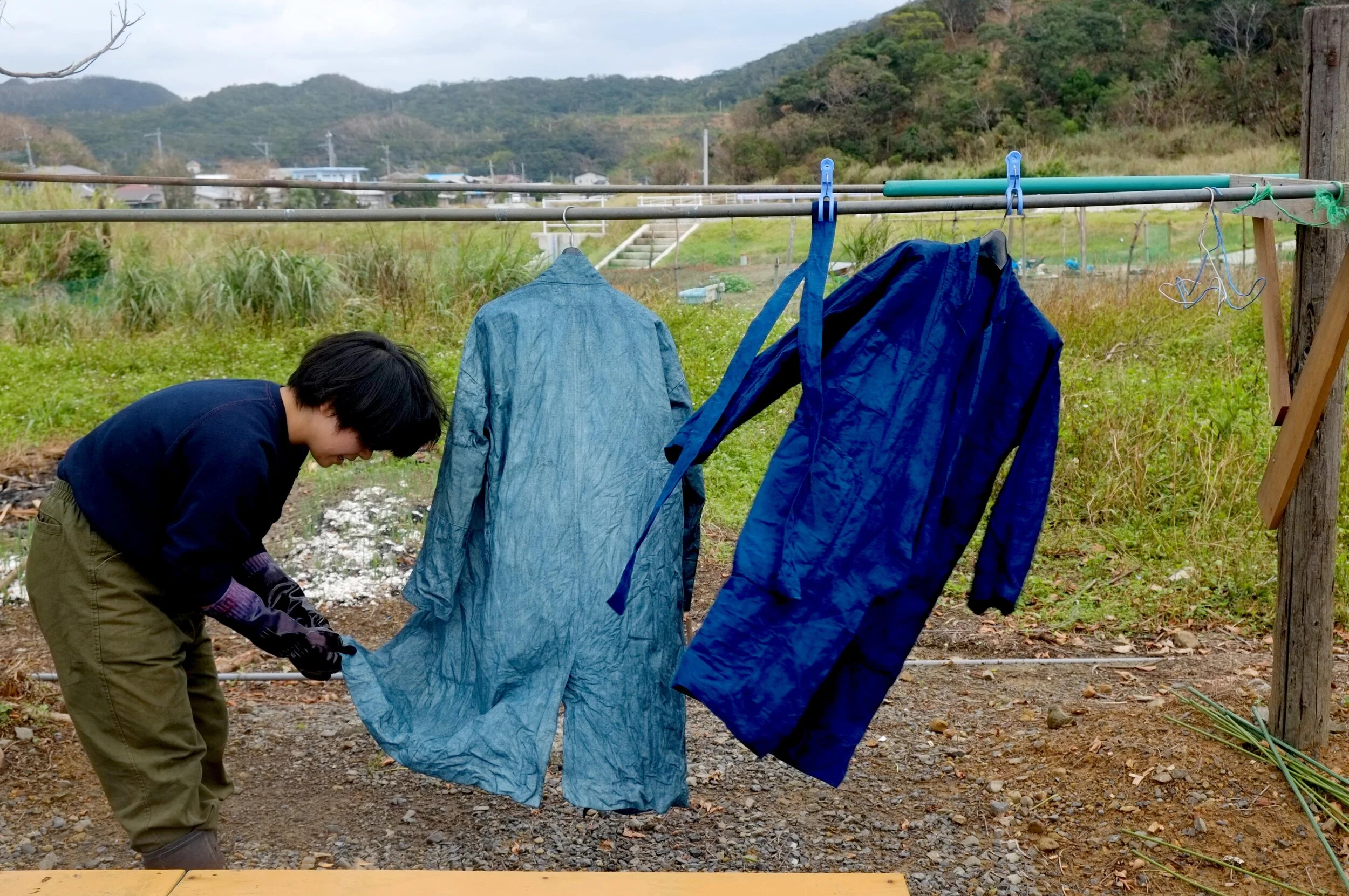


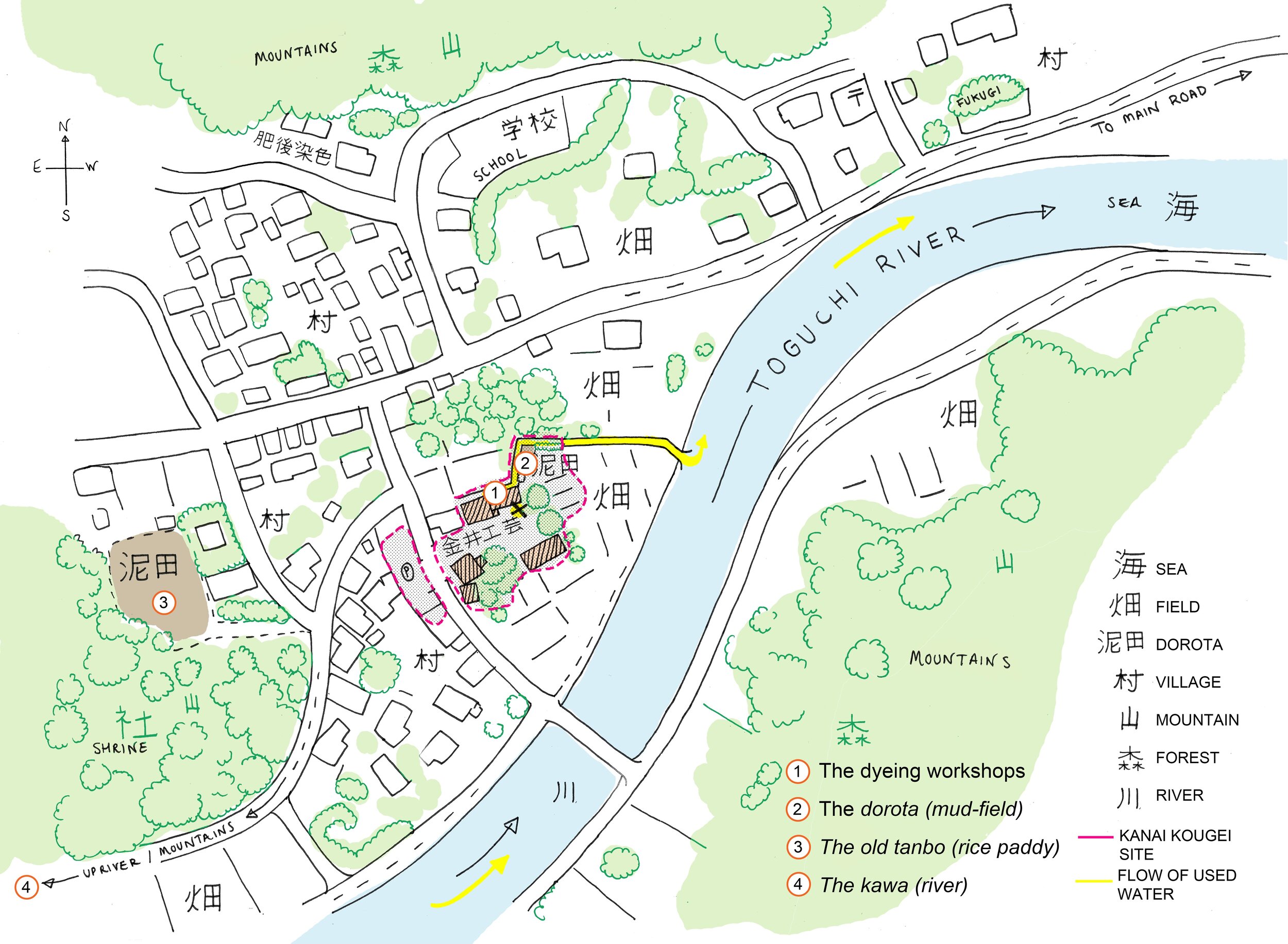
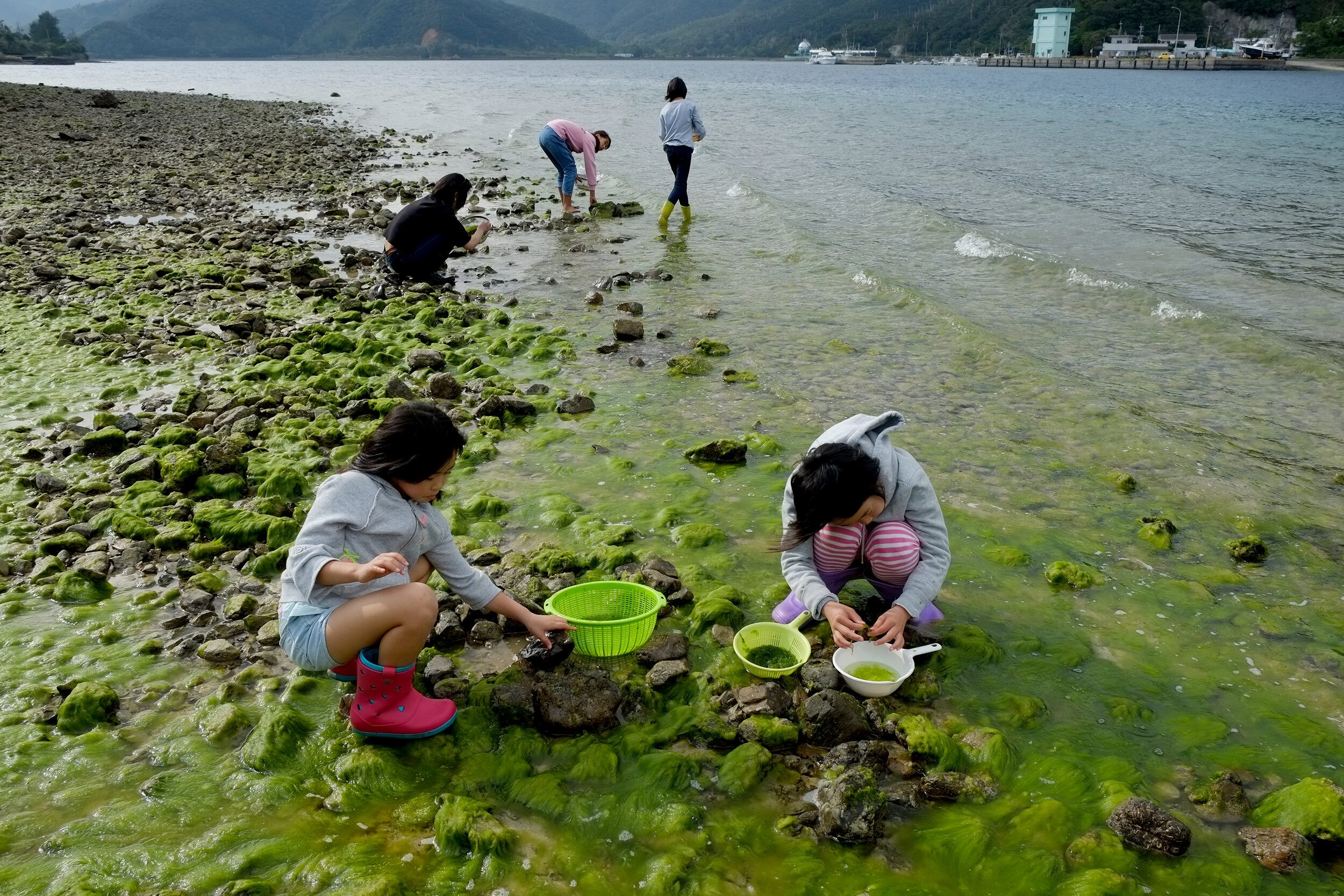
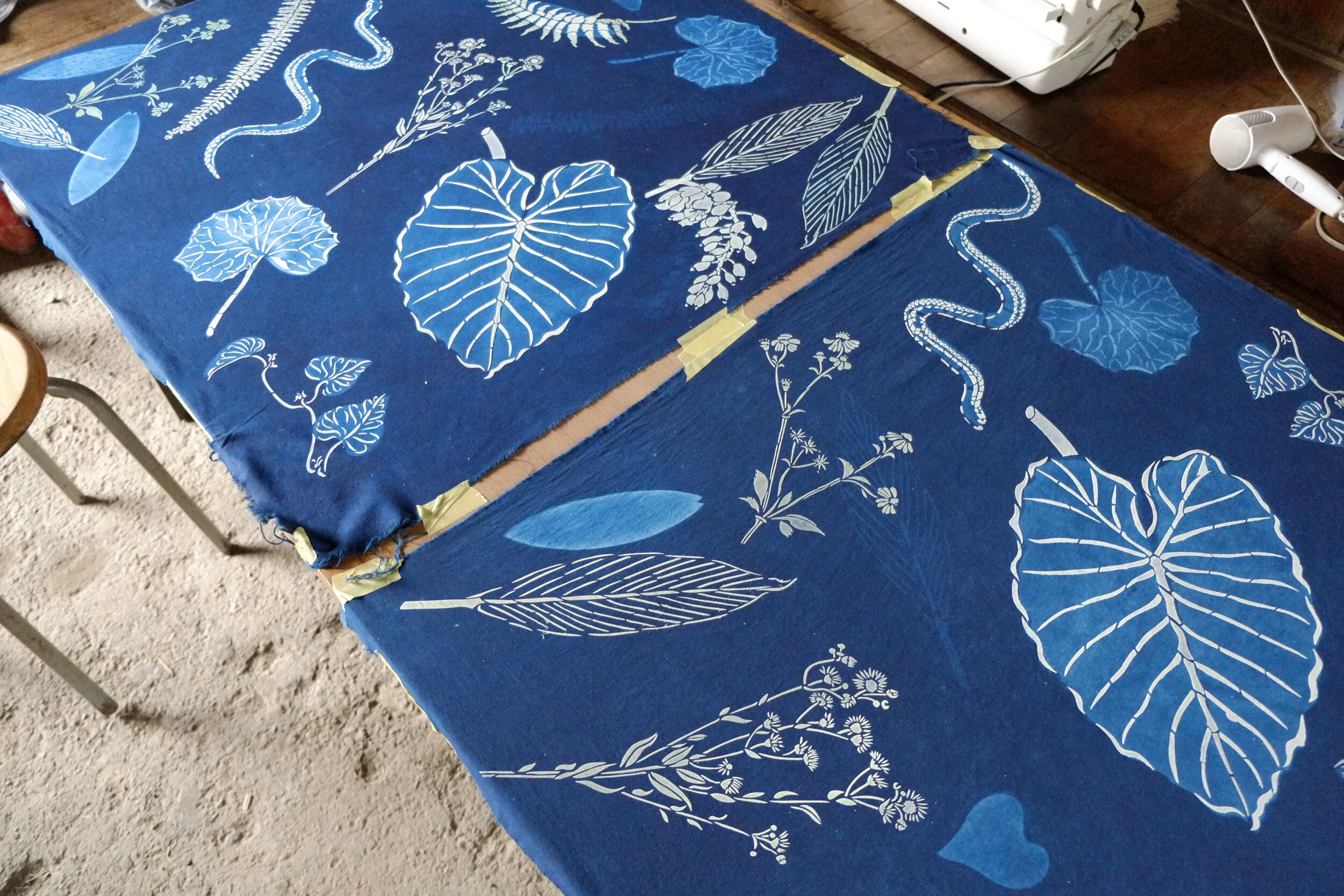




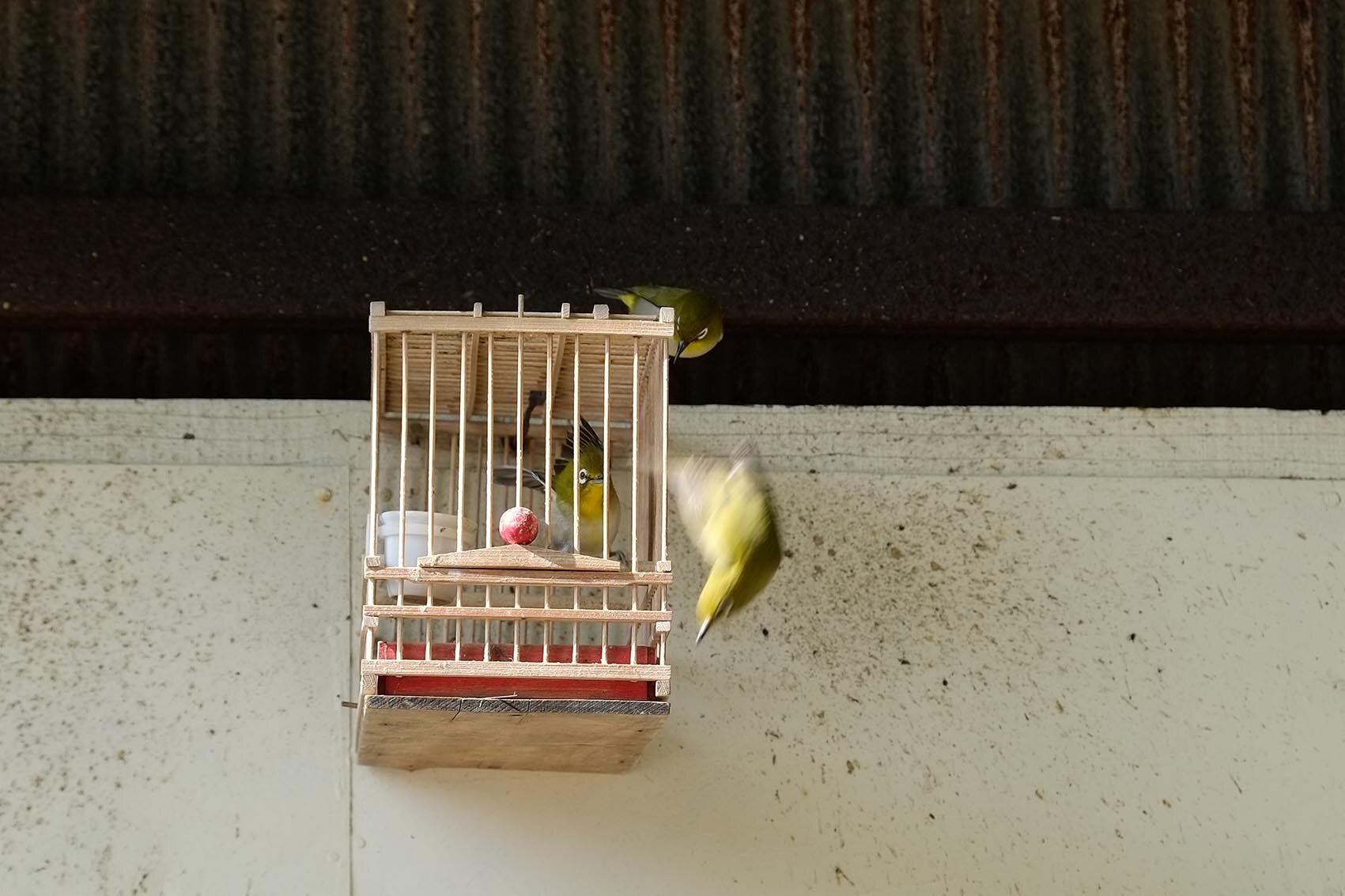

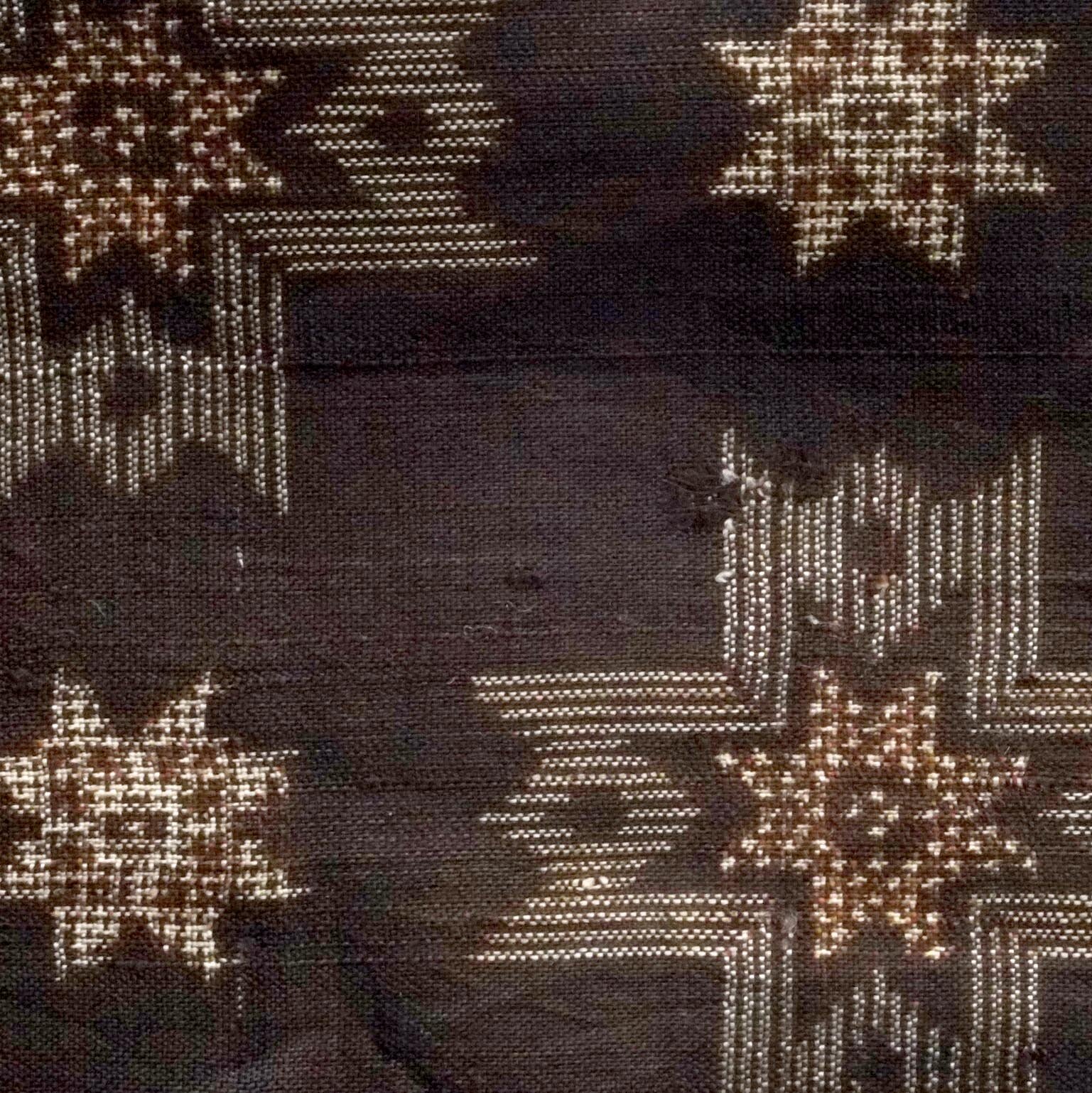
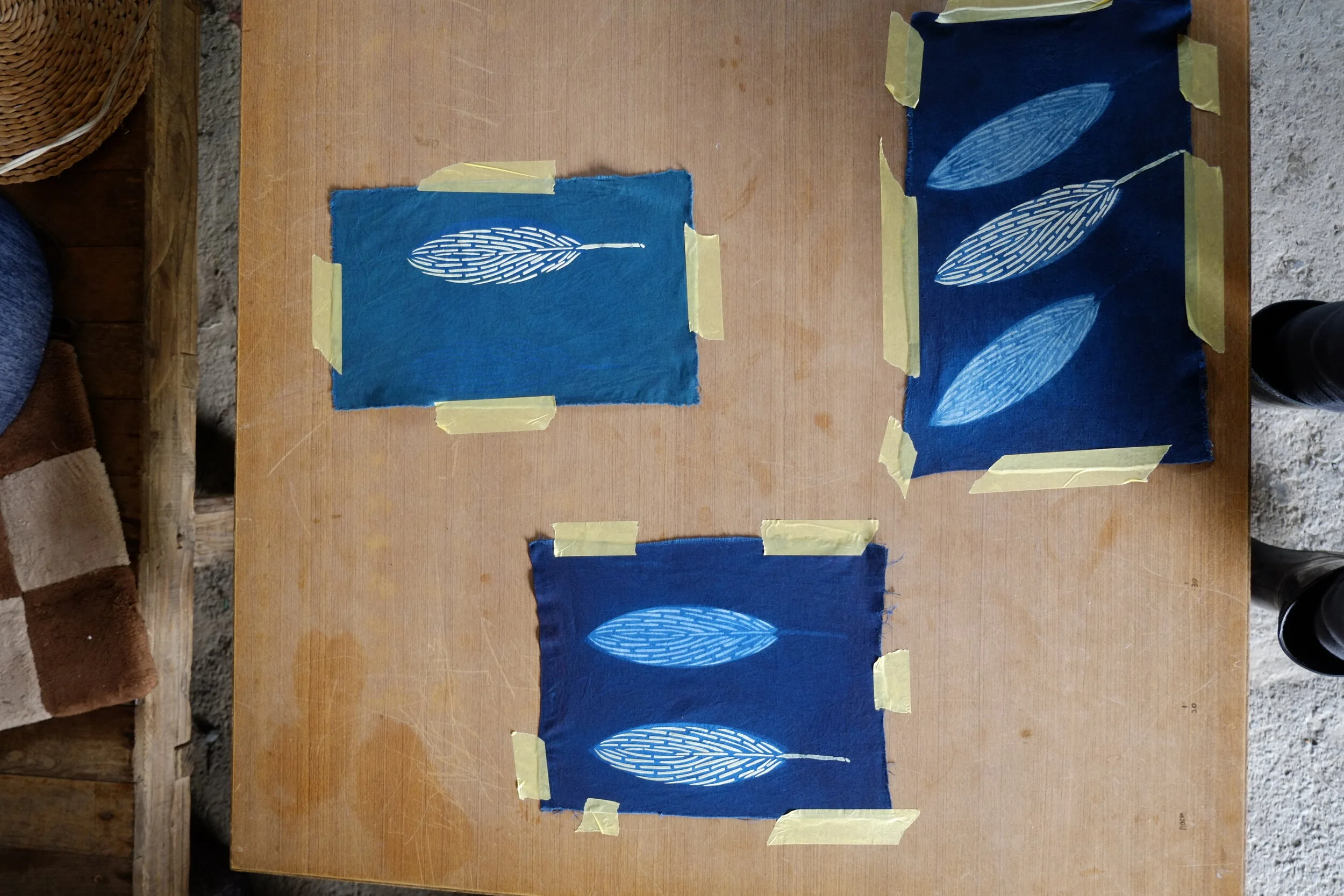
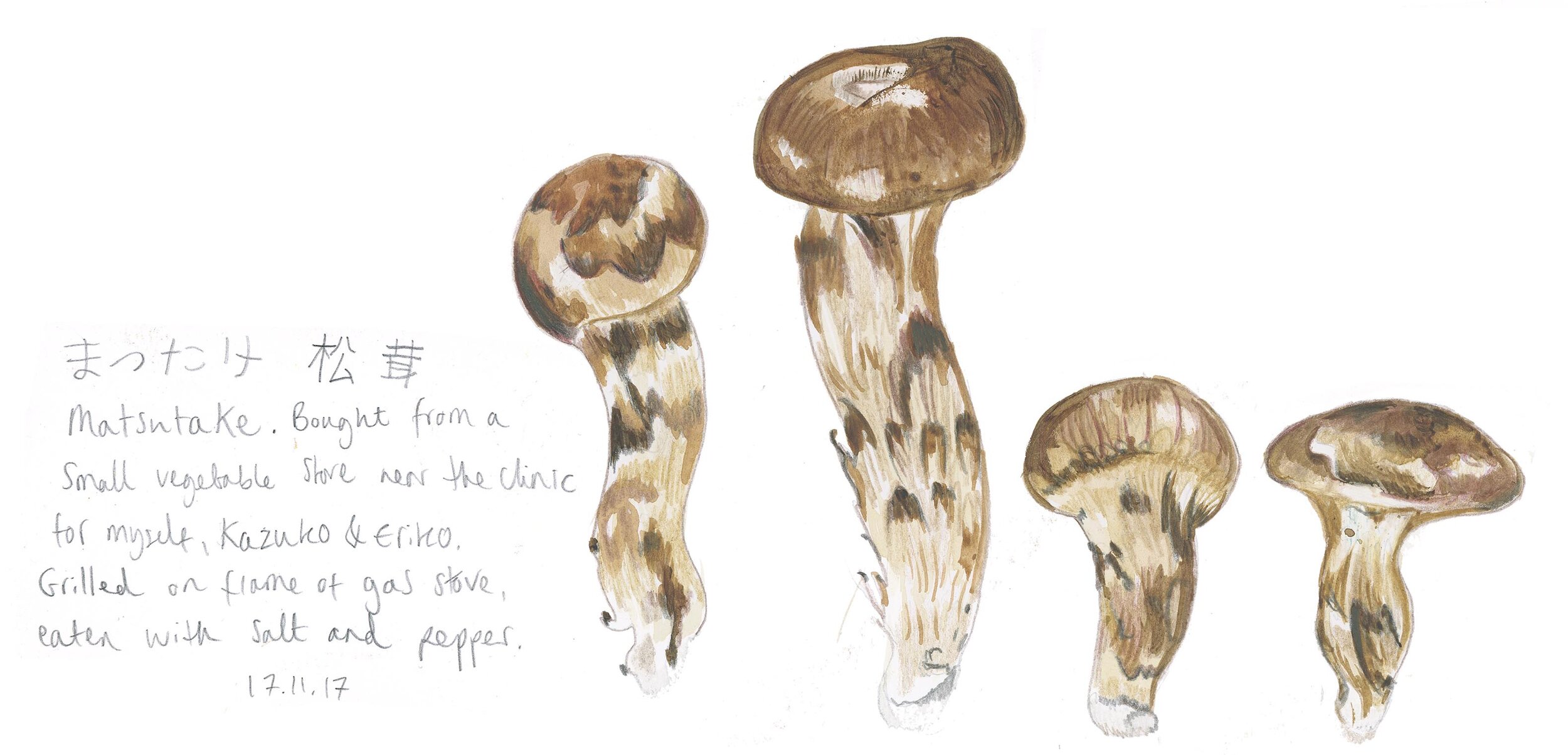
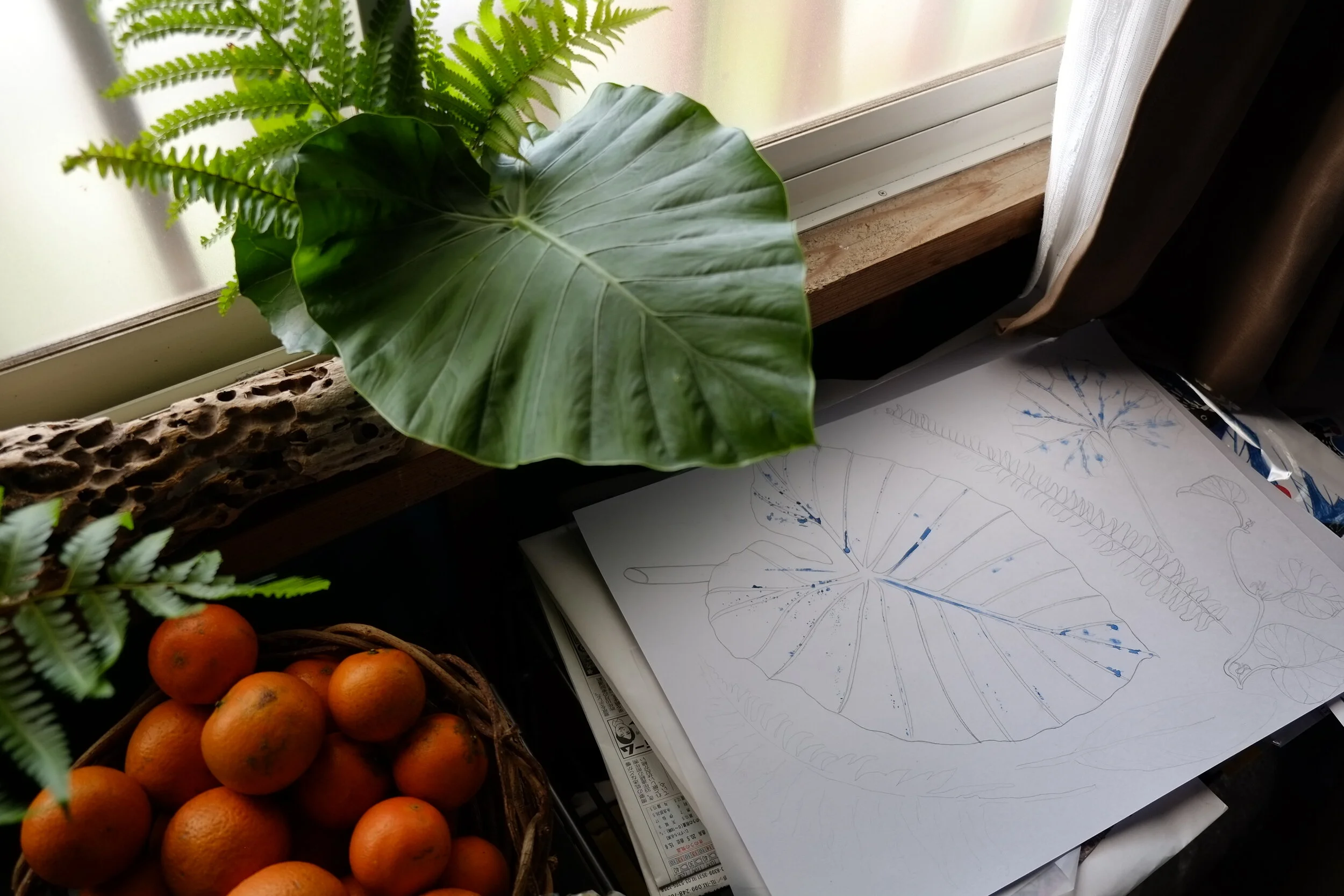
During periods of ethnographic fieldwork, I combine visual, conceptual and practical aspects of the design process with anthropological traditions of contextualisation, interpretation and theory to ask what results design as an anthropological method might yield. While photography is an exemplary recording tool for documenting, identifying and communicating my research to a non-specialist audience I also use visuals – photographs, drawings, textile designs, found images – to capture the essence of my fieldsite in order to translate my research data more holistically. Influenced by my background as a designer, where images (or inspirations) are combined into a kind of bricolage, this generative technique aims to make new visual or functional cultural forms. Yet with an awareness of this extractive practice in the commercial sphere, I instead use it to generate a line of ethnographic enquiry that combines imaginative, academic and ethical thinking.

